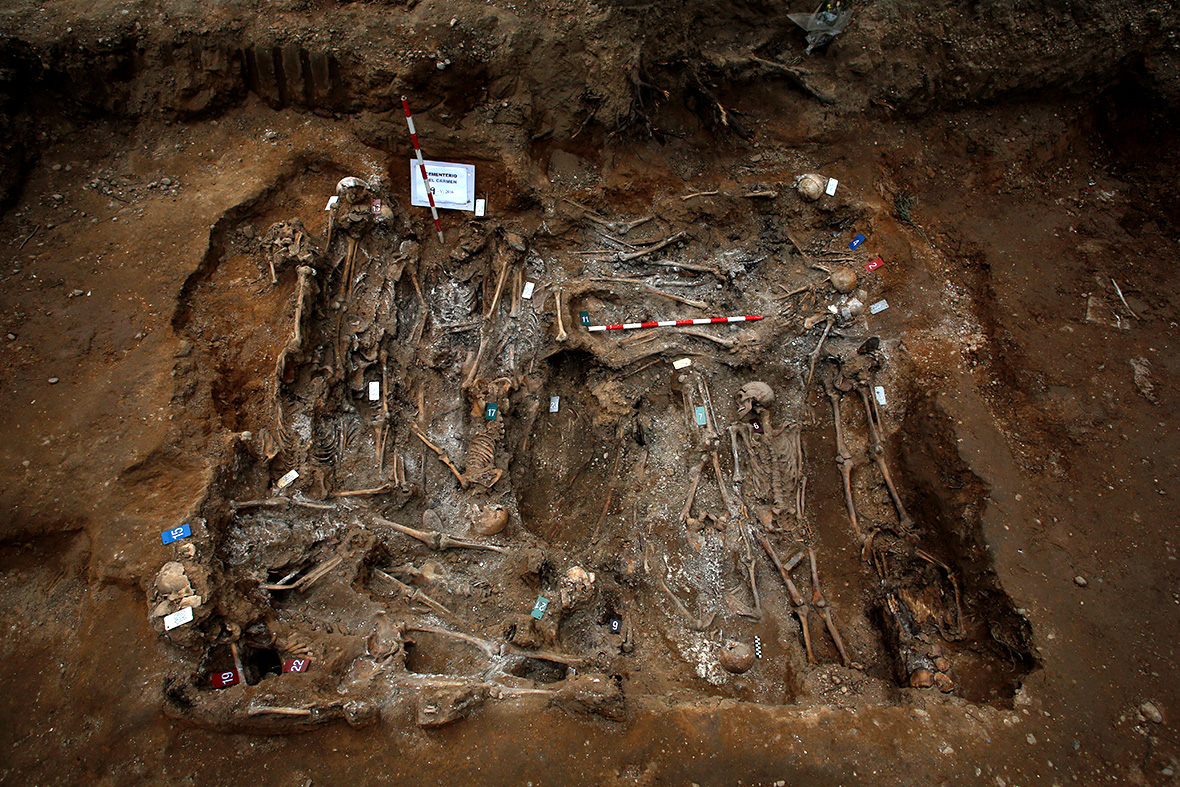Thousands 'disappeared' by General Franco's regime in Spanish Civil War discovered in mass graves
It is estimated that over 100,000 men and women were executed and buried in unmarked graves during the Spanish Civil War.
Eighty years after the start of the Spanish Civil War, the country is trying to recover and identify the remains of people who were forcibly 'disappeared'. It is estimated that over 100,000 men and women were executed and buried in unmarked graves during the conflict. It is thought there may be more than 2,000 mass burial sites across Spain dating from the 1936 to 1939 civil war and the ensuing dictatorship of General Francisco Franco. Only a handful have been dug up.

In the central Spanish city of Valladolid, the council has authorised and paid for excavation work to start uncovering graves that archaeologists believe conceal more than 1,000 unidentified bodies. Since April, workers have emptied three graves of 185 bodies that will be sent to a forensic archaeologist for analysis in the hope it may help to identify the dead.
"This is a question of national dignity and human rights rather than opening the wounds of the past," says the mayor of Valladolid, Oscar Puente, whose council paid €25,000 (around £22,000) to employ a professional team to work on the site. "We could not simply look away."




They have started examining the area with radar pulses to find more unmarked mass burial sites. As many as 10 pits filled with bodies could be in the graveyard, says Julio del Olmo, the archaeologist overseeing the dig. They victims had been executed following judgment in kangaroo courts, or slain in small groups and tipped into the pit by truck, he said.
Archaeologists brush soil away from skeletons, some wearing decayed leather boots. The bodies are interspersed with crumbly white soil, the quicklime that was spread on the recently executed to prevent smells and prevent disease. Even so, slaughter on such a grand scale must have reeked, says del Olmo.


Abilio Perez, an octogenarian former bar owner, tended the unmarked area above the graves alongside his wife for six decades, leaving flowers on All Saints' Day and marking off the area with four iron rods and chains. A priest told a relative that the bodies of his wife's father and brother were dumped there after being executed by Franco's forces in the autumn of 1936. He was told for years by authorities that nothing was there. "We put a cross there, but it was taken away," he said.


Spain, in common with many Latin American countries in their transition to democracy, passed an amnesty law in 1977 which pardoned the crimes of the Franco government. The mass graves were left undisturbed. However, there is increasing interest from a new generation to face up to the country's past.
The opening of graves and acknowledgement of their existence symbolise a positive change on behalf of Spanish institutions, says del Olmo. But it is too late for most of the relatives who remember the executed men and women. "It's unforgivable that this is being done now and not then," he said, taking a break from preparing a skeleton to be photographed.
"Just 25 years ago the widows, who suffered the most from this loss, were alive. Now they're all dead. The only children alive are the youngest. That is something to which all the governments of this country have been impervious," he said.




Historians estimate as many as 500,000 combatants and civilians were killed on the Republican and Nationalist sides in the war. Atrocities were committed on both sides. The victors under Franco executed thousands more after the war, according to British historian Paul Preston's book "The Spanish Holocaust".
© Copyright IBTimes 2025. All rights reserved.






















